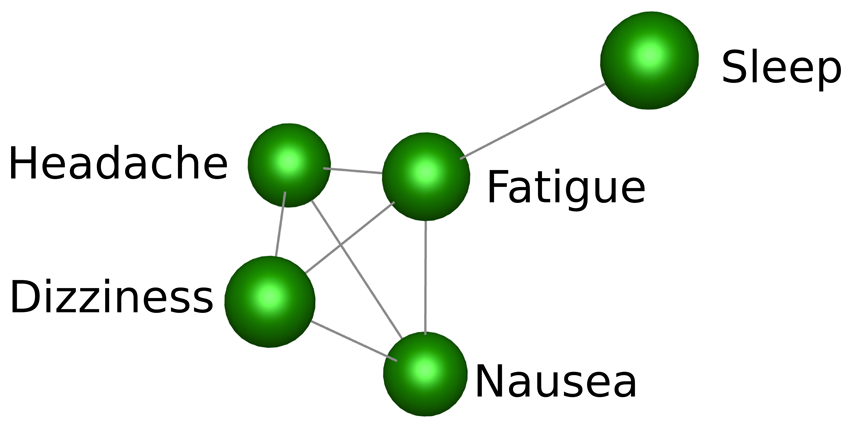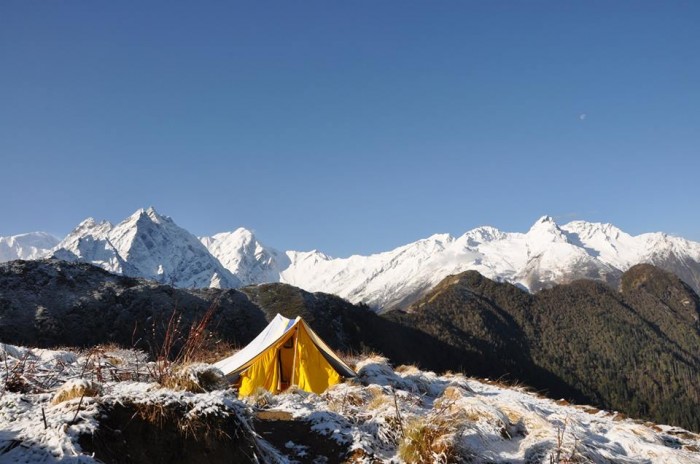“The glittering shine of height seems so beautiful, but every beautiful rose has its own thorns!”
Climbing a mountain has always allured people from far overseas for its adventure and beauty. We get excited by the very idea of imagining our self of standing on the peak of the mountain. The feeling of summiting the peak of the mountain, the dare and the passion are like addictive drugs. You never get enough of it.
But reaching the height is not that simple, it has a monster called ‘AMS’ waiting for you in between.
AMS Bole To? (AMS Meaning?)
AMS stands for Acute Mountain Sickness. It is a condition in which, one has an adverse effect of hypoxia at an altitude above 2500 m. In simple terms, you start feeling anxious and face various health issues due to the shortage of oxygen on height. Loss of appetite, nausea, vomiting, Increase in heart rate, breathlessness, headache, depression, weakness, insomnia, and irritability are all common symptoms of AMS.

Image From : http://goo.gl/d5dMGp
How Do AMS Occur?
As altitude increases about 2500 m, its atmospheric pressure decreases. Due to which the oxygen molecules per breath is reduced, which in turn means heart and lungs need to work overtime in order to compensate. Due to which it ultimately leads to AMS.
Top 10 Places That Will Make You Forget Delhi’s Heat
Ok, Now How Can I Avoid Or Prevent It?
No worries, there are solutions for this hazard which can be followed to get rid of this sickness. If necessary precautions are taken, one can avoid this sickness or even if it occurs then you can cure it.
Upon Arrival :
When you fly directly into a high altitude city, be sure to take it easy for the first few days. Gradually increase your workload. Factor in some touristy activities that involve walking. Going straight from the airport to the start of your trek is potentially putting yourself at the risk of AMS.
Hydration :
From the time you arrive at the start, drink at least 3 liters of water per day. When you hit the trail, drink even more! The air is drier and thinner at higher altitude. However, at cooler temperatures many hikers make the mistake of not drinking enough water. The initial symptoms of AMS are similar to those of dehydration. So people often assume they have AMS when actually they are simply dehydrated. Either way, you have to drink enough water. You may be peeing like a racehorse, but you will feel better for it. A good indicator as to whether or not you are sufficiently hydrated is your urine. Darker color indicates lack of water intake. When you are at height altitudes, avoid drinking alcohol or caffeine, especially during the first few days of your hike. Both increases dehydration.
Ascend Gradually :
Don’t overexert in the initial stages of your hike. Pace yourself. Aim at becoming progressively stronger as the trek continues. Think tortoise rather than hare. Practice climbing lower peaks before your attempt. This will make your body use to it. I know a person who attempted Mt. Kilimanjaro directly. He was recommended to go Ladakh before the trek as it is on higher altitude. But he ignored. While on the trek he got AMS and unfortunately he had to leave the expedition mid way.
Climb High, Sleep Low :
Climb high, sleep low is the strategy by which you sleep at a lower elevation to which you have ascended during the day. It is said that when hiking above 3000 m (9843 ft), you should not increase your sleeping altitude (i.e. the altitude at which you make camp) by any more than 300 m (984 ft) per day. This is a conservative estimate, but considering the potential dangers of AMS, nothing represents a useful benchmark for people who are new to high altitude trekking.
In the beginning, it is always better to be on the side of caution.
Treatment :
- Drink lots of water (at least 4 liters per day).If necessary then take a couple of ibuprofen or paracetamol for headache.
- Rest once symptoms have occurred. It could take two to three days. It should be ok to continue ascending once you are fine.
- If your symptoms are severe, then even Diamox or any other medication (such as Dexamethasone) can’t help you. Your only option is to descend.
- In case of severe AMS symptoms, Descend immediately (at least 500m). Seek medical attention ASAP.
HAVE A SAFE AND HAPPY TREKKING ![]()
